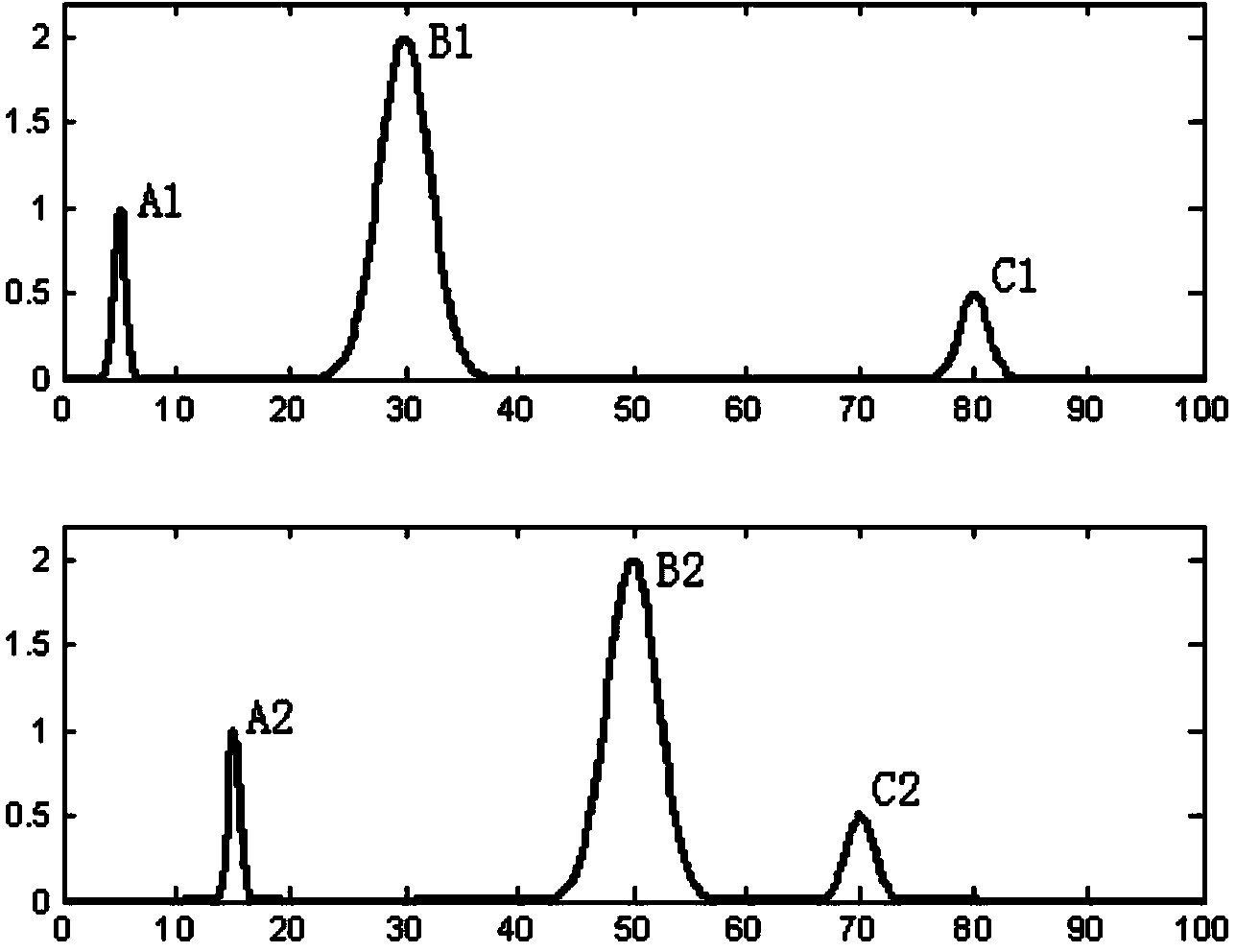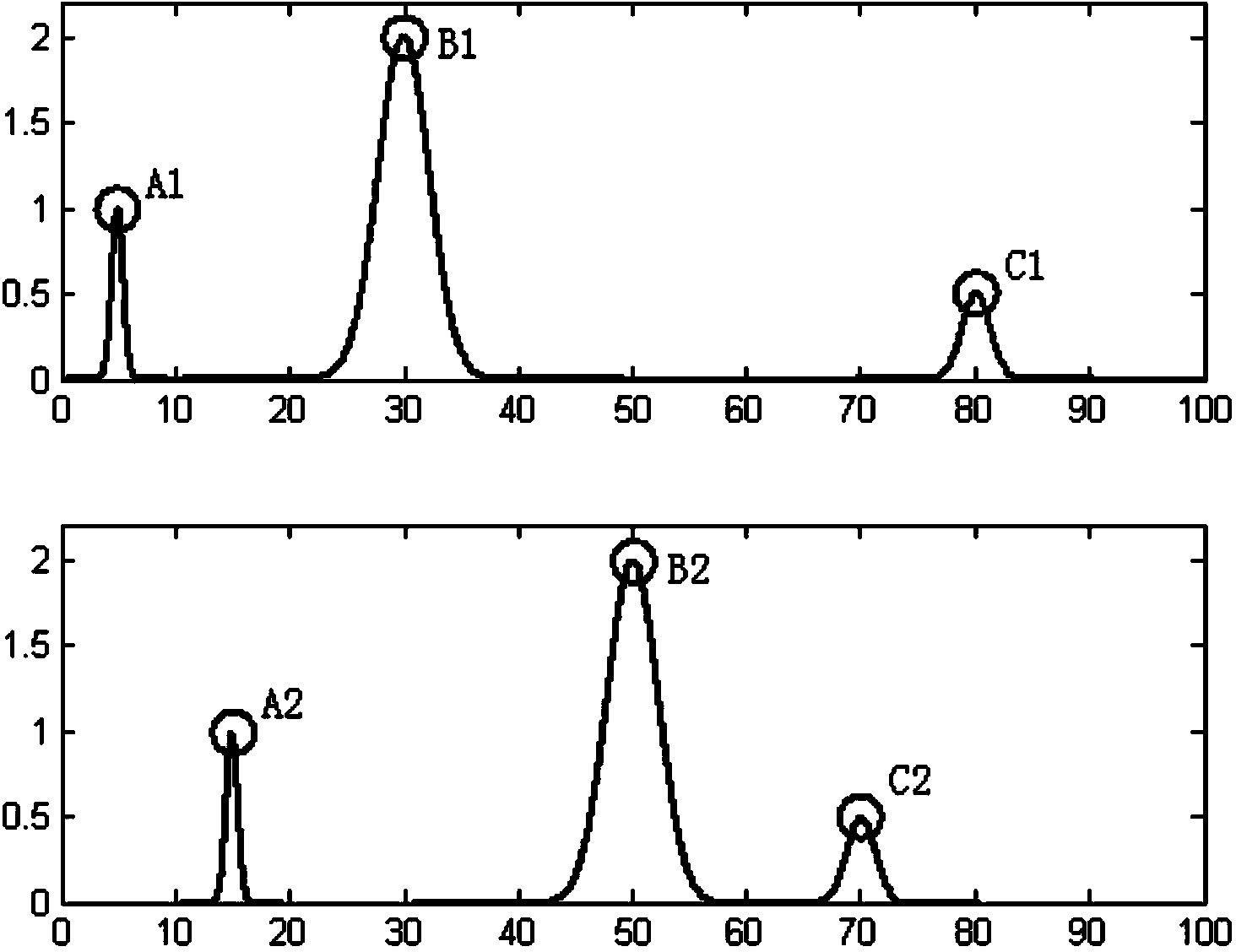Method for identifying samples by utilizing chromatographic feature extraction
A chromatographic feature and sample technology, applied in the field of chromatographic analysis, can solve problems such as difficulty in chromatographic signal analysis, and achieve the effects of stable features, high accuracy, and fast computing speed
- Summary
- Abstract
- Description
- Claims
- Application Information
AI Technical Summary
Problems solved by technology
Method used
Image
Examples
example 1
[0037] Example 1, Analysis of sample chromatographic peak drift
[0038] The first step: Chromatographic signal acquisition
[0039] Use a chromatograph to collect the chromatographic signal peak of the sample to be tested; then, change the external conditions (such as temperature, humidity or replacement of the chromatographic column) for chromatographic signal collection, and collect the chromatographic signal peak of the sample to be tested for the second time. See figure 1 , Showing the chromatographic signal diagram of the sample to be tested before and after changing external conditions. As shown in the figure, there are three signal peaks in the chromatographic signal collected for the first time, named A1, B1, and C1. Three signal peaks also appeared in the chromatographic signal collected for the second time, named A2, B2, and C2. It can be seen from the figure that due to changes in external conditions during the acquisition process, the chromatographic signal peak of t...
example 2
[0050] Example 2, Analysis of wine samples
[0051] Collect the chromatographic signals of the same liquor under different chromatographic column conditions, 10 for each. The chromatographic signal of the wine sample is collected, and the collected chromatographic peak drifts due to changes in external conditions during the collection process. See Figure 4 , Showing the chromatographic signal diagrams of wine samples under different external conditions. The denoising function wden provided by Matlab software is used to denoise the collected chromatographic signal. See Figure 5 , Showing the chromatographic signal graph of the wine sample after denoising. Use the function findpeaks provided by Matlab software to detect the peak of the chromatographic signal. See Image 6 , Showing a schematic diagram of the peak value of the chromatographic signal of a wine sample.
[0052] Obtain the characteristics of the chromatographic signal of the wine sample, including box characteristi...
example 3
[0055] Example 3, wine identification
[0056] See Figure 7 , Showing the chromatographic signal diagram of the same wine under different conditions. As shown in the figure, (a) and (b) are the chromatographic signals obtained by the same wine under different conditions, with chromatographic peak drift; (c) and (d) are the chromatographic signals obtained by the same wine under different conditions. There is also chromatographic peak drift (here c, d and a, b are two different types of wine). Collect 20 signals for each wine sample, and collect 80 chromatographic signal data. The other steps are the same as those in Examples 1 and 2, and will not be repeated here.
[0057] Take the 20 chromatographic signals corresponding to (a) and (c), find the average value of the chromatographic signals, respectively, calculate the distance between the 20 chromatographic signals corresponding to (b) and (d) and the two average values; if the distance If it is less than 5, it is judged as a...
PUM
 Login to View More
Login to View More Abstract
Description
Claims
Application Information
 Login to View More
Login to View More - R&D
- Intellectual Property
- Life Sciences
- Materials
- Tech Scout
- Unparalleled Data Quality
- Higher Quality Content
- 60% Fewer Hallucinations
Browse by: Latest US Patents, China's latest patents, Technical Efficacy Thesaurus, Application Domain, Technology Topic, Popular Technical Reports.
© 2025 PatSnap. All rights reserved.Legal|Privacy policy|Modern Slavery Act Transparency Statement|Sitemap|About US| Contact US: help@patsnap.com



